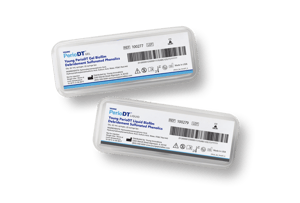
Clinical Study
A Local Desiccant Antimicrobial Agent as an Alternative to
Adjunctive Antibiotics in the Treatment of Periodontitis:
A Narrative Review
How a Residual Smear Layer Influences Periodontal Pocket Healing
Conclusion
Due to its proven antibacterial properties, PerioDT may be a promising therapeutical agent for the non-surgical and surgical treatment of periodontitis, peri-implantitis, endodontic infections, and even mucosal ulcers.
The adjunctive use of PerioDT can bring additional clinical benefits, reduce the need for invasive therapeutical procedures and enhance the healing of the tissues in treating both periodontal and peri-implant lesions. Moreover, PerioDT has the potential to partially remove the smear layer from root surfaces more efficiently than other locally adjunctive antimicrobial agents, which can facilitate, to some extent, periodontal tissue reattachment at the intervention sites.
1. Micu, I.C.; Muntean, A.; Roman, A.; Stratul, S.I.; Pall, E.; Ciurea, A.; Soancâ, A.; Negucioiu, M.; Barbu Tudoran, L.; Delean, A.G. A Local Desiccant Antimicrobial Agent as an Alternative to Adjunctive Antibiotics in the Treatment of Periodontitis: A Narrative Review. Antibiotics 2023, 12, 456. https://doi.org/10.3390/antibiotics12030456
Study Summary
A 2023 narrative review by Micu et al compared the residual smear layer after mechanical and ultrasonic instrumentation to hand instrumentation with a desiccate application. The smear layer was more completely removed from root structure treated with the desiccate, creating a more biocompatible root surface.
In conclusion, the presence of a residual smear layer on the root surface can significantly influence the healing of periodontal pockets by acting as a barrier to reattachment, promoting microbial retention, impairing biocompatibility, and compromising biomechanical stability. Dental professionals must be aware of the formation and implications of the smear layer and employ appropriate techniques and adjuncts to ensure its efficient removal during periodontal therapy.